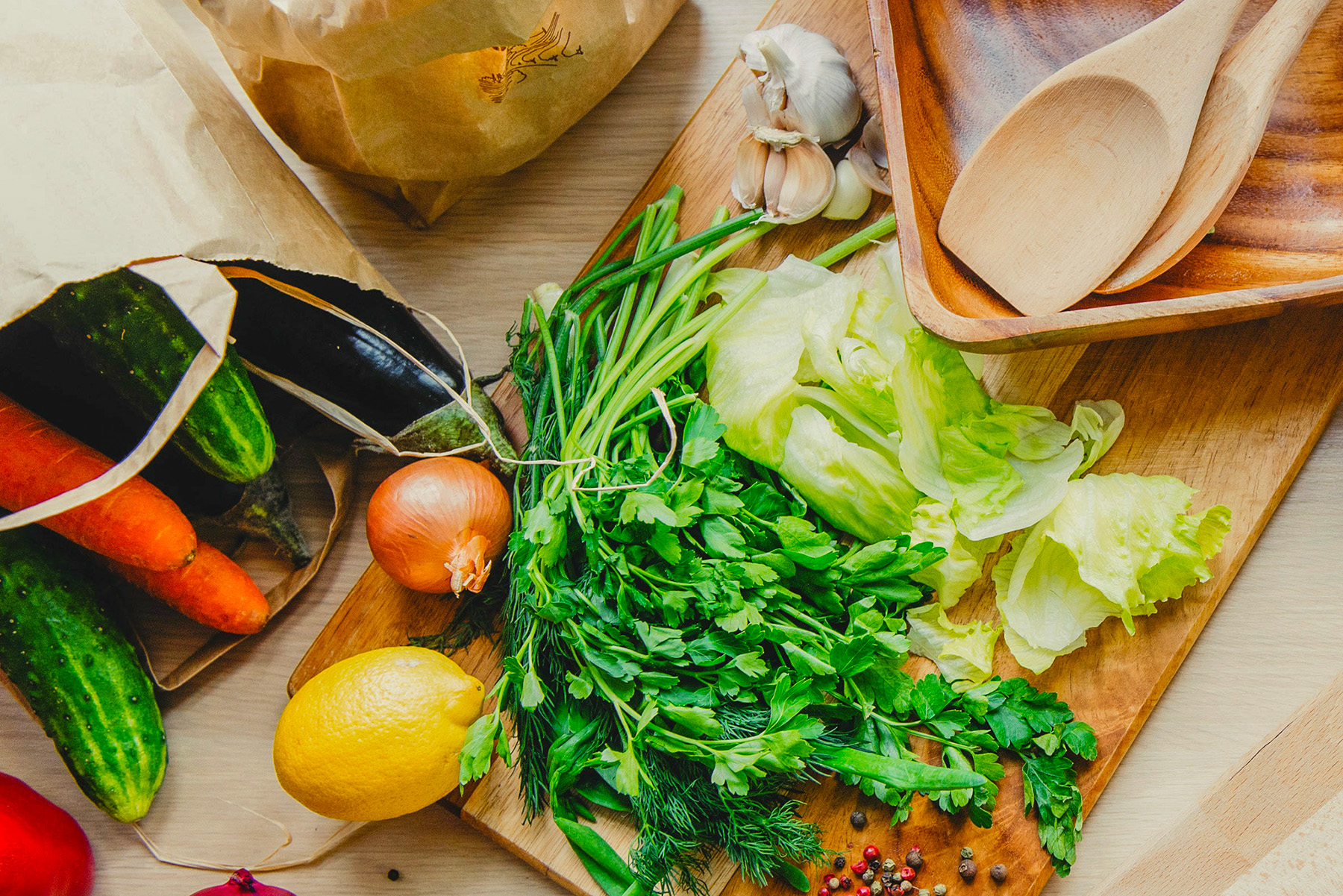If you have a sufficient supply of certain substances that ensure balance in your brain and support your four main neurotransmitters - the so-called Big Four that affect your moods - then you are happy. However, if your supply of these compounds, specifically certain amino acids, is not sufficient, your brain may be in a state of imbalance, not producing hormones which positively influence how you perceive the world and how you feel in your body.

There are four main neurotransmitters that affect our mood and state of mind. You can take a simple test to find out how you feel and what is probably going on with your neurotransmitters. This test is borrowed from The Mood Cure, a book by Julie Ross.
The big four
Serotonin:
- High serotonin levels - you are positive, self-confident, flexible, easy-going.
- Low serotonin levels - you tend to be negative, obsessive, worried, irritated, sleep-deprived.
GABA:
- High GABA levels - you are relaxed and stress-free.
- Low GABA levels - you feel overwhelmed and stressed.
Catecholamines:
- High catecholamine levels - you are active, alert, and full of energy.
- Low catecholamine levels - you feel lethargic.
Endorphins:
- High endorphin levels - you enjoy feelings of comfort, security, joy, and euphoria.
- Low endorphin levels - even a commercial can make you cry, you are oversensitive, you take everything personally.
Have you recognised yourself in any of these? Our “true” emotions last only a moment and are a natural reaction to the life situations that we face. However, if we feel out of balance or stuck in certain patterns over a long period of time, it might be a good idea to have a think and take extra good care of our brain’s biochemistry. Even though this part is very simplistic, it can provide you with the basics for your next steps. If you have problems with your thyroid or with hormones in general, even then can this way be useful to you. It is, however, of the utmost importance to really listen to your body and even consult with professionals on how to apply each protocol, especially if you take medication. Julia also mentions that even though the specialists at her clinic have a wealth of experience, there are disorders which these protocols cannot alleviate. These include autism, psychosis, bipolar disorder, violent rage, and paranoia.
Before moving on to the specific protocols, it is a good idea to think about what it is that actually needs to be fixed. In her book, Julia describes different tests and questionnaires which exist for this purpose. This is a safer way, and I highly recommend it. However, if you feel that the signposting I describe above is enough for you, you can try experimenting with different substances, implementing them one by one. Keep in mind, however, that biohacking is a path that may not always be successful and that it carries its risks.
Pro-serotonin diet
High-protein foods contain tryptophan, an amino acid which is converted into 5-HTP and subsequently helps to release serotonin in the brain. We have already described this process in previous articles. Tryptophan is an essential amino acid which means that our body cannot synthesise it and must therefore get it from food. So what foods contain this amino acid? In an ideal setting, where the animals are bred in a loving, stress-free environment, you can get your tryptophan from different kinds of meat - turkey, beef, pork, and chicken, also from eggs, and dairy products.
- Poultry: Chicken and turkey are generally rich in tryptophan. White meat contains higher amounts of tryptophan than dark meat.
- Fish: Some fish are good sources of tryptophan, such as salmon, tuna, and halibut. These fish also contain other beneficial nutrients, for example omega-3 fatty acids.
- Dairy products: Milk, cheese, and yoghurt are all sources of tryptophan. In addition, dairy products also contain other nutrients that support serotonin production, such as calcium and vitamin D. On the other hand, dairy products are also characterised by their strongly pro-inflammatory properties.
- Eggs: Eggs are a good source of tryptophan, especially egg whites. They provide a number of essential nutrients and amino acids as well. They are also a source of lectins, however, which are toxic for the body. Again, we should remember that not only the source of the food is important, but also the amount - the difference between medicine and poison is in the dose!
- Legumes: Foods such as lentils, chickpeas, and beans (including black beans) are rich in tryptophan. At the same time, they contain a large amount of fibre and are a good source of plant protein. However, legumes are difficult for many people to digest, and they also contain high levels of lectins. Lectins are a varied group of proteins or glycoproteins found naturally in many plants, animals, and microorganisms. They play an important role in the physiology of animals and people in cell adhesion, the functioning of the immune system, and other biological processes. Some lectins may cause health issues, though. Some may be resistant to digestion, for example, they may bind to the intestinal epithelium, potentially interfering with the function of the intestinal barrier. This leads to the hypothesis that they may contribute to conditions such as leaky gut syndrome. Additionally, lectins such as wheat germ agglutinin (WGA), found in wheat and other cereals, are thought to have pro-inflammatory effects and may cause adverse symptoms in sensitive individuals, or even conditions like non-celiac gluten sensitivity. It is important to note that most people can tolerate foods containing lectins as part of a balanced diet, and benefit from their consumption. Cooking, fermenting, and soaking lectin-containing foods can help reduce their levels and their potential negative effects.
- Nuts and seeds: Various nuts and seeds, including almonds, walnuts, sunflower seeds, and sesame seeds, contain tryptophan. They are also rich in healthy fats and other essential nutrients. Again, they can be quite hard to digest if they are not soaked to activate the beneficial substances in nuts and make them easier to digest.
- Whole grains: Whole grains, such as oats, quinoa, brown rice, and wheat germ, contain tryptophan. These grains are rich in fibre as well. On the other hand, oats have other negative effects and may cause an increase in blood sugar levels.
- Soy products: Foods made of soy, such as tofu or tempeh, are good sources of tryptophan. They are rich in protein and provide a range of other nutrients. They too have their negative effects, though.
As you can see, tryptophan can be found in foods, and you can optimise your meal plan accordingly. If you are healthy and young and feel amazing, then your diet can do the trick. However, if you feel that your mood and your energy levels are not getting any better in spite of this, you can add the supplements listed below to your optimised diet.
Pro-serotonin supplements
If you are taking antidepressants, do not combine them with the following supplements under any circumstances as doing so could result in so-called serotonin syndrome! Consult any changes and experiments with your doctor or relevant professionals.
- 5-HTP: 5-hydroxytryptophan (5-HTP) is a tryptophan-derived compound used commonly as a dietary supplement. It is believed to increase serotonin levels in the brain as it readily passes through the blood-brain barrier and represents the easiest way to boost levels of this neurotransmitter organically. 5-HTP is usually obtained from the seeds of the Griffonia simplicifolia tree from West Africa. The seeds of this tree contain rather large amounts of 5-HTP.
- Protocol: Normal dosage is 50-300 mg per day with individual variations. You can determine your optimal dose by taking 50 mg and then waiting 30-60 min to see if you feel any effects. If not, gradually increase the dose. Contrarily, if you perceive any negative effects, discontinue use immediately. Take the first 50 mg in the afternoon, then add another 50 mg after an hour if you do not feel any effects. If you still feel nothing, take another 50 mg, again after an hour. Continue in this way for several days. Do not exceed the maximum daily dose of 300 mg and observe how your body responds to the substance. You can take 150 mg with lunch, and the remaining 150 mg later in the afternoon. If you do not notice any difference, you can try l-tryptophan.
- L-tryptophan: Individuals who find 5-HTP ineffective may benefit from the slightly more expensive l-tryptophan. L-tryptophan is an essential amino acid that serves as a building block for proteins in the body. It cannot be synthesised in the body, which means we have to get it from food. L-tryptophan serves as the precursor for several important compounds, including serotonin and melatonin.
- Protocol: The general dosage is 500-2,000 mg per day. Again start with a lower dose and increase as needed. You can start by taking 500 mg in the morning and another 500 mg about 30-60 min before sleep. You can increase the dose up to 3,000 mg per day, which is the maximum. If you do not notice any significant difference, you can try perforated St. John’s wort.
- Perforated St. John’s wort: This herb is my favourite. I used to go to meadows in the foothills to wildcraft this wonderful plant in nature, and I must say that it helped me out of many difficult moments. Perforated St. John’s wort, Hypericum perforatum, has been used for centuries in traditional medicine to alleviate various ailments, including mild to moderate depression. In general, this herb affects the neurotransmitters in our brain - not only serotonin, but also norepinephrine and dopamine. You can take it in an infusion, but taking it in the form of a supplement is more effective thanks to higher absorbability.
- Protocol: The general dose is around 300-900 mg per day, and it is taken in the morning. With this herb, it is a good idea to carefully test how it makes you feel throughout the day. You might notice the effects and have a smile from ear to ear, but you might not feel very eager to work the first couple of days. Take 300 mg with lunch, another 300 mg with dinner, and the remaining 300 mg 30-60 min before sleep. The most efficient form is proving to be a tincture with glycerin.
- SAM-e: SAM-e (S-adenosylmethionine) is a compound found naturally in the body that participates in various biochemical reactions. It is derived from the amino acid methionine and serves as a methyl donor in many metabolic processes. Many excessive alcohol drinkers have low levels of this compound, same as people who take or have taken cocaine. In these cases, SAM-e levels continue to decline with age. If you have tried the other supplements without feeling any significant difference, you can try supplementing SAM-e.
- Protocol: The dosage is 400-1,600 mg per day, and it should be taken in the first half of the day, with or without food. Again, start with 400 mg at the same time every day and gradually increase the dose according to your needs and the effects you observe.
When to stop
If you notice any undesirable effects, discontinue the use of the supplements and have your thyroid hormones checked, along with a test for pyroluria. Once you have finished any pack of supplements, take a break and give yourself some time to reflect. If you feel good, your serotonin levels may be high enough now, and you do not need to keep taking supplements. However, once the winter season arrives, keep them handy in case the symptoms reappear.

